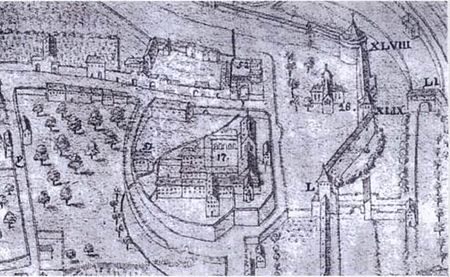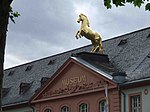Altmünster, Mainz
Benedictine monasteries in GermanyCistercian monasteries in GermanyRoman Catholic churches in Mainz

The Altmünster abbey near Mainz, Germany, was reputedly founded by Saint Bilihildis (d. 734), who served as the first abbess; however, it may well be a 7th-century foundation. Though founded as a Benedictine abbey, it adopted the rule of the Cistercians in the 13th century. It was dissolved during the secularization of the 18th century, and the abbey buildings were demolished. The abbey church was given to a Protestant congregation in the early 19th century; it was destroyed during World War II but rebuilt and reconsecrated.
Excerpt from the Wikipedia article Altmünster, Mainz (License: CC BY-SA 3.0, Authors, Images).Altmünster, Mainz
Münsterstraße, Mainz Altstadt
Geographical coordinates (GPS) Address Website Nearby Places Show on map
Geographical coordinates (GPS)
| Latitude | Longitude |
|---|---|
| N 49.99888 ° | E 8.263016 ° |
Address
Altmünsterkirche
Münsterstraße 25
55116 Mainz, Altstadt
Rhineland-Palatinate, Germany
Open on Google Maps










